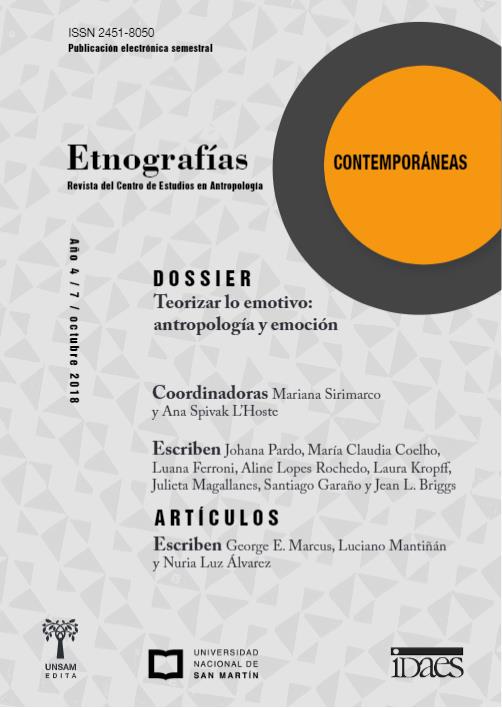Las emociones tienen muchas caras. Lecciones Inuit
Resumo
Deduzco que lo que me han pedido que haga hoy es contarles un poco sobre lo que hago allá afuera en el frío e inhóspito Ártico, y cómo y -sobre todo- por qué (demonios). Por supuesto, estas tres preguntas -como toda pregunta que se precie- tiene muchas respuestas, y las profesionales y las personales están todas enredadas en esas muchas respuestas. Voy a focalizarme en la experiencia de aprendizaje más poderosa que tuve como antropóloga novata, treinta años atrás, y a tratar de mostrarles lo que surgió de ello.
Referências
Benedict, Ruth (1934). Patterns of Culture. New York, Penguin Books.
----------------- (1946). The Chrysanthemum and the Sword. New York, World Publishing.
Briggs, Jean L. (1970). Never in Anger. Cambridge, Harvard University Press.
------------------ (1976). “The Study of Eskimo Emotional Expression”. Papers in Linguistics, Vol. 9, Nº 3-4, pp. 111-128.
------------------ (1995a). “Vicissitudes of Attachment: Nurturance and Dependence in Canadian Inuit Family Relationships”, Old and New. Arctic Medical Research, Vol. 54.
----------------- (1995b). “The Study of Inuit Emotions: Lessons from a Personal Retrospective”, en J.A. Russell et al. (eds.): Everyday Conceptions of Emotion. Dordrecht, Kluwer Academic Publishers. pp. 203-220.
------------------ (1998). Inuit Morality Play. New Haven, Yale University Press and St. John's, Nfld. Brody, Hugh (1975). The People's Land. Harmondsworth, Penguin.
Geertz, Hildred (1959). “The Vocabulary of Emotion: A Study of Javanese Socialization Processes”, Psychiatry, Vol. 22, pp. 225-237.
Mead, Margaret (1928). Coming of Age in Samoa. New York, American Museum of Natural History.
------------------- (1930) Growing Up in New Guinea. New York, Mentor.
Kenneth, E. (1965). The High Valley. New York, Scribner.
























